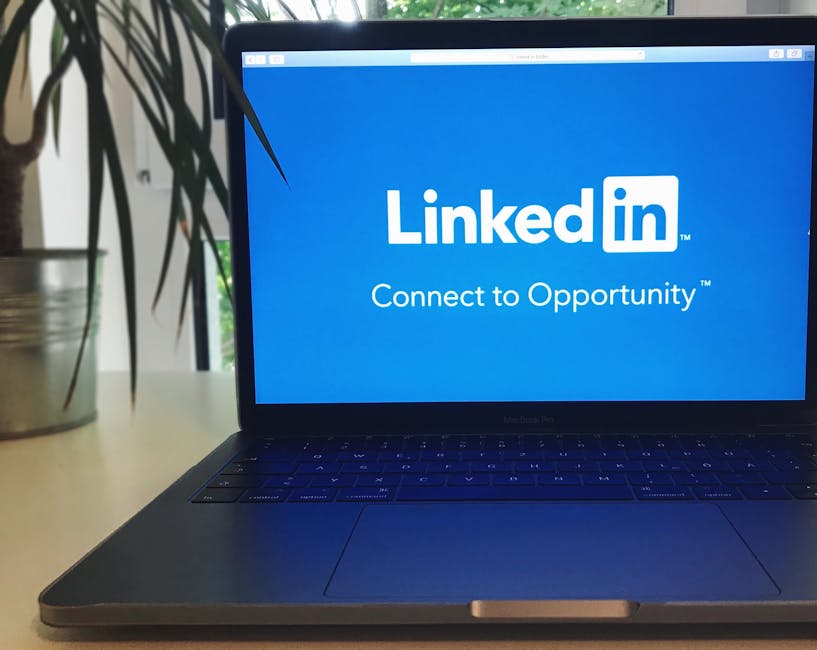The landscape of digital advertising has undergone a profound transformation, with video ads on social media emerging as a dominant force. This shift is not merely a trend but a fundamental reorientation of how brands connect with consumers. Video, with its unparalleled ability to convey complex messages, evoke emotion, and capture attention, has become the preferred medium for both content consumption and advertising across all major social platforms. The sheer volume of video consumed daily, from short-form vertical clips to longer narrative pieces, underscores its power in a fragmented media environment. Marketers are increasingly allocating significant portions of their budgets to social video campaigns, recognizing its potential to drive brand awareness, foster engagement, and ultimately, convert viewers into customers. The evolution from static image ads to dynamic video formats reflects a broader consumer preference for immersive, visually rich experiences. This preference is amplified on social media, where users actively seek out engaging content that resonates with their interests and lifestyles. Consequently, the strategic deployment of video ads is no longer optional but a critical component of a comprehensive digital marketing strategy. Understanding the nuances of each platform, mastering creative techniques, and accurately measuring performance are paramount for advertisers seeking to maximize their return on investment in this dynamic space.
Key Trends Shaping Social Video Advertising
The social media video ad ecosystem is in constant flux, driven by technological advancements, evolving user behaviors, and platform innovations. Several overarching trends are dictating the current and future trajectory of video advertising on these platforms, demanding adaptive strategies from marketers.
Short-Form Vertical Video Dominance: This is perhaps the most significant trend, spearheaded by TikTok and subsequently embraced by Instagram Reels, YouTube Shorts, and Facebook Reels. The format is characterized by videos typically under 60 seconds, often 15-30 seconds, presented in a 9:16 vertical aspect ratio.
- Characteristics: Short-form vertical video thrives on rapid consumption, high energy, and often, authenticity or a raw, unpolished feel. Its success lies in its ability to immediately capture attention with a strong hook, deliver a concise message, and leverage trending sounds, filters, or challenges. The vertical format is optimized for mobile viewing, which accounts for the vast majority of social media consumption.
- Why it Works: The snackable nature of these videos aligns with shrinking attention spans. Their immersive, full-screen experience minimizes distractions. Algorithms on platforms like TikTok prioritize engagement metrics, pushing highly viral content to wider audiences, including ads that mimic organic content. This format encourages creativity and allows brands to experiment with diverse content styles, from educational snippets to humorous skits or quick product demonstrations.
- Strategies for Marketers:
- Strong Hooks: The first 1-3 seconds are critical. Use intriguing visuals, surprising statements, or a clear problem statement.
- Rapid Pacing: Keep cuts quick and dynamic to maintain viewer interest. Avoid lingering shots.
- Text Overlays: Many users watch videos with sound off. On-screen text ensures the message is conveyed. Use concise, readable fonts.
- Sound Design and Trending Audio: Music and sound effects play a huge role. Leveraging trending audio, where appropriate, can significantly increase reach and resonance. Ensure licensed music or original sounds are used for ads.
- Native Feel: Ads that blend seamlessly with organic content often perform best. This means adopting the platform’s aesthetic, tone, and common content formats (e.g., challenges, duets, stitches on TikTok).
- Clear Call-to-Action (CTA): Despite the short format, a clear and concise CTA is essential. This can be verbal, textual, or a button overlay.
Authenticity and User-Generated Content (UGC) Integration: Consumers increasingly value authenticity and transparency from brands. Highly polished, overly produced ads can sometimes feel inauthentic on platforms known for their user-generated nature.
- Why it Works: UGC, whether directly from customers or through influencer collaborations, builds trust and relatability. It showcases products or services in real-world contexts, often from the perspective of someone the viewer can identify with. It also significantly lowers production costs compared to traditional studio shoots. Consumers are more likely to trust recommendations from peers or relatable creators than from a brand directly.
- Facilitating UGC in Campaigns: Brands are actively encouraging customers to create content through contests, branded hashtags, or direct requests. Repurposing compelling UGC as ads (with proper permissions) is a highly effective strategy.
- Creator Economy and Influencer Marketing: Collaborating with social media creators who align with the brand’s values and target audience is a powerful way to leverage authenticity. Creators inherently understand their audience and the platform’s nuances, producing content that resonates more effectively than traditional ads. This extends beyond macro-influencers to micro- and nano-influencers who often boast higher engagement rates due to their niche communities. Campaigns can involve creators producing native video ads, participating in challenges, or showcasing product integrations within their regular content flow.
Interactive Video Ads: Moving beyond passive consumption, interactive video ads engage viewers directly, transforming them from spectators into participants.
- Types of Interactivity:
- Polls and Quizzes: Allow viewers to vote on preferences, answer questions, or express opinions directly within the ad.
- Shoppable Tags/Hotspots: Viewers can tap on products within the video to see more details, price, or directly add to cart without leaving the ad environment.
- AR Filters and Lenses: Brands create augmented reality experiences that users can try on (e.g., virtual try-on for makeup or clothing) and share.
- Gamified Elements: Mini-games or challenges integrated into the ad.
- Choose-Your-Own-Adventure Narratives: Viewers make choices that dictate the video’s progression.
- Benefits: Increased engagement metrics (dwell time, clicks), richer data collection on user preferences, direct conversion pathways (especially for shoppable ads), and a more memorable brand experience. Interactive elements make ads feel less like interruptions and more like valuable content.
Personalization and Dynamic Creative Optimization (DCO): The ability to tailor ad content to individual users or highly specific audience segments is a major advantage of social media advertising.
- Leveraging Data: Marketers use first-party data (CRM lists, website visitor data) and third-party data (platform-provided targeting options) to understand user preferences, behaviors, and demographics.
- Dynamic Creative Optimization (DCO): This technology automatically generates multiple versions of an ad based on predefined templates and data inputs. For a video ad, this could mean different intros/outros, product shots, CTAs, or even background music, all dynamically assembled to match the viewer’s profile.
- Benefits: Higher relevance leads to improved engagement rates, better click-through rates, and ultimately, lower costs per conversion. DCO allows for highly scalable personalization, addressing the challenge of creating unique ad experiences for vast audiences. It moves beyond simple audience targeting to deliver a message tailored to what resonates most with that specific individual or segment.
Live Stream Shopping and Conversational Commerce: While not exclusively “video ads,” these trends heavily leverage live video and blur the lines between content, commerce, and advertising.
- Live Stream Shopping: Brands host live video events where they showcase products, answer questions in real-time, and offer exclusive deals. Viewers can purchase directly within the live stream. This builds urgency, community, and creates an interactive shopping experience. Platforms like TikTok, Facebook, and Instagram are investing heavily in live shopping features. Video ads can promote these live events.
- Conversational Commerce: This involves using messaging apps and chatbots integrated with video content to facilitate sales, customer service, and product discovery. Video ads can drive traffic to these conversational touchpoints.
- Future of Retail: These trends indicate a move towards highly immersive, real-time, and interactive retail experiences directly within social media environments, with video at their core.
Accessibility and Inclusivity: As social media becomes more ubiquitous, ensuring video ads are accessible to everyone, including those with disabilities, is not only ethical but also expands reach.
- Key Elements:
- Captions/Subtitles: Essential for viewers who are hearing-impaired or watch with sound off (a majority). Automated captioning is available on many platforms, but manual review for accuracy is crucial.
- Audio Descriptions: For visually impaired users, providing a narration that describes key visual elements of the video.
- Diverse Representation: Featuring a diverse range of people in terms of ethnicity, age, body type, ability, and gender identity helps ensure the ad resonates with a broader audience and reflects societal diversity.
- Clear Visuals and Contrast: Ensuring text and visual elements are easy to see and read.
- Benefits: Reaching a wider audience, enhancing brand reputation as inclusive and socially responsible, and often complying with legal accessibility requirements in certain regions.
Platform-Specific Tactics for Video Ads
While the overarching trends apply across platforms, each social media giant has its unique audience, ad formats, algorithmic nuances, and creative best practices that marketers must master.
TikTok
TikTok’s meteoric rise has cemented short-form vertical video as a primary format. Its algorithm prioritizes content that generates high engagement, meaning ads that feel “native” to the platform often outperform traditional polished commercials.
- Audience: Predominantly Gen Z and Millennials, but increasingly diverse. Users are there for entertainment, discovery, and trends.
- Algorithm Understanding: The “For You Page” (FYP) algorithm is powerful, pushing content based on individual user engagement, not just follower counts. This means a new brand can go viral quickly if its content (including ads) resonates.
- Ad Formats:
- In-Feed Ads: Appear as users scroll through their FYP. They are full-screen, vertical videos, 5-60 seconds long (TikTok recommends 9-15s), with a clear call-to-action button. They often mimic organic content.
- TopView: A full-screen video ad that appears immediately when a user opens the app, offering maximum impact. Usually 5-60 seconds.
- Branded Hashtag Challenge: Brands create a challenge with a unique hashtag, encouraging user-generated content around it. This is not a direct video ad format but a campaign type that drives massive UGC video creation and virality, often promoted via In-Feed ads.
- Branded Effects: Custom AR filters or stickers that users can incorporate into their own videos, increasing brand visibility and engagement.
- Creative Best Practices for TikTok:
- Embrace Trends: Jump on trending sounds, filters, dances, or challenges if they align with your brand. This shows cultural relevance and increases discoverability.
- Sound On: Sound is paramount on TikTok. Use trending audio, original sound, or a captivating voiceover. Music rights for commercial use are critical.
- Native Feel (Don’t Be Obvious): Ads that look and feel like organic user-generated content perform best. This means using a more casual, authentic tone, sometimes even lower production quality (deliberately “unpolished”).
- Be Quick and Engaging: The first 3 seconds are make-or-break. Hook viewers immediately.
- Show, Don’t Tell: Demonstrate product benefits or features visually and quickly.
- Clear, Concise CTA: Even if it feels subtle, ensure viewers know what to do next (e.g., “Shop Now,” “Learn More,” “Sign Up”).
- Use Text Overlays: Essential for conveying key messages, especially since many users scroll with sound off.
- Humor and Relatability: Often resonate well with the TikTok audience.
- Targeting and Measurement: TikTok offers robust targeting options based on demographics, interests, behaviors, and custom audiences (e.g., website visitors). Measurement includes impressions, clicks, video views (by percentage watched), conversions, and return on ad spend (ROAS). TikTok’s Creative Center provides insights into trending content.
Instagram
Instagram, now heavily focused on video, especially Reels, offers diverse opportunities for video advertisers. It balances aesthetics with authenticity.
- Audience: Broad demographics, strong visual focus, interested in lifestyle, fashion, travel, and personal brands.
- Reels as a Primary Driver: Instagram’s response to TikTok, Reels, is now a core content format. Its algorithm heavily promotes Reels, making them a prime spot for video ads.
- Ad Formats:
- Instagram Reels Ads: Vertical, full-screen video ads that appear between organic Reels. They support music, AR effects, and text overlays, similar to organic Reels. They can be up to 90 seconds, but shorter (15-30s) often perform better.
- Instagram Stories Ads: Full-screen vertical videos (up to 15 seconds per story segment, longer videos are split) that appear between users’ stories. Highly engaging due to their ephemeral nature and interactive elements.
- In-Feed Video Ads: Traditional square or vertical videos (up to 60 seconds, though often shorter performs best) that appear in users’ main feeds. Can be carousel videos with multiple video or image cards.
- Explore Ads: Appear within the Instagram Explore tab, allowing brands to reach users actively discovering new content.
- Creative Considerations for Instagram:
- High-Quality Visuals: Instagram remains a visually driven platform. Even authentic content should have good lighting and clear visuals.
- Aesthetics Matter: Especially for fashion, beauty, or lifestyle brands, maintaining a consistent and appealing aesthetic is crucial.
- Music and Audio: Use licensed music or original sounds effectively. Instagram’s music library for ads is more limited than for organic posts.
- Interactive Elements: Utilize polls, quizzes, and swipe-up CTAs in Stories and Reels to boost engagement.
- Shopping Features: Leverage shoppable tags within video ads or link to Instagram Shop/product pages for direct conversions.
- Narrative and Storytelling: While short, videos can tell a concise story about the product or brand.
- Influencer Collaborations: Integrated influencer content performs well on Instagram, leveraging their audience trust.
- Targeting and Measurement: Instagram leverages Meta’s (Facebook’s) extensive targeting capabilities, including detailed demographics, interests, behaviors, custom audiences, and lookalike audiences. KPIs include impressions, reach, video views, CTR, and conversions.
Facebook
Facebook remains a powerhouse for video advertising, particularly for reaching diverse demographics and leveraging its unparalleled audience targeting capabilities. It supports a mix of short-form and longer-form video.
- Audience: The largest and most diverse social media platform, spanning all age groups and interests.
- Ad Formats:
- In-Feed Video Ads: Appear in the main news feed, usually in a square or 16:9 aspect ratio, though vertical (9:16) is increasingly common. Can range from a few seconds to several minutes, but shorter is often better for initial engagement.
- In-Stream Video Ads: Mid-roll or pre-roll ads that play within longer video content on Facebook Watch or other monetized videos. Can be non-skippable (up to 15s) or skippable (longer). These are effective for reaching engaged viewers of premium content.
- Facebook Reels Ads: Similar to Instagram Reels, full-screen vertical ads appearing in the Reels feed.
- Stories Ads: Vertical video ads within Facebook Stories.
- Creative Strategy for Facebook:
- Sound Off First: Assume users watch with sound off, especially in the news feed. Use captions, text overlays, and strong visual storytelling.
- Catchy First 3-5 Seconds: Crucial for stopping the scroll.
- Problem-Solution or Benefit-Oriented: Clearly articulate the value proposition.
- Diverse Video Lengths: Experiment with shorter videos for awareness/engagement and longer ones for deeper product explanations or storytelling (e.g., case studies, testimonials) if appropriate for your audience and objective.
- Strong CTA: Clear and prominent, whether a button, link, or verbal call to action.
- Retargeting with Video Views: A powerful tactic on Facebook. Create custom audiences of people who have watched a certain percentage of your video ads, then target them with subsequent ads (e.g., conversion-focused ads). This builds familiarity and moves prospects down the funnel.
- Targeting and Measurement: Facebook’s Ad Manager offers the most extensive targeting options, from basic demographics to hyper-specific interests, behaviors (e.g., frequent travelers, recent home buyers), life events, custom audiences (website visitors, customer lists), and lookalike audiences. Measurement includes reach, impressions, video views (by percentage), CTR, conversions, and detailed ROAS. The pixel helps track off-platform conversions.
YouTube
As the world’s second-largest search engine and primary video platform, YouTube is indispensable for video advertising, offering diverse formats for reaching users based on their search intent and viewing habits.
- Audience: Global and highly diverse. Users come for entertainment, education, tutorials, news, and product reviews.
- Ad Formats:
- Skippable In-Stream Ads: Play before, during, or after other videos. Viewers can skip after 5 seconds. You pay if they watch 30 seconds (or the full video if shorter) or interact with the ad. Best for brand awareness and consideration.
- Non-Skippable In-Stream Ads: Up to 15 seconds, must be watched before the main video. Ideal for concise brand messages and high awareness.
- Bumper Ads: Non-skippable, up to 6 seconds. Short, memorable messages ideal for building brand awareness at scale. Often used in conjunction with longer campaigns.
- Outstream Ads: Appear on Google partner websites and apps outside of YouTube. They start playing with sound off and only turn on if the user taps them. Mobile-only.
- Masthead Ads: A premium format appearing at the top of the YouTube homepage, highly visible. Usually purchased on a reservation basis. Ideal for massive reach during short periods (e.g., product launch).
- YouTube Shorts Ads: Vertical video ads within the YouTube Shorts feed, similar to TikTok and Reels.
- Creative Strategy for YouTube:
- Align with User Intent: Consider where your ad appears. A pre-roll ad needs an immediate hook; a mid-roll ad can leverage existing viewer engagement.
- Vary Lengths: Use bumper ads for quick brand reinforcement, skippable ads for deeper engagement, and longer content for explainer videos or testimonials.
- Clear Value Proposition: Especially for skippable ads, clearly state what the product or service offers within the first 5 seconds.
- Strong Visuals and High Production Quality: YouTube users expect high-quality video.
- Clear Call-to-Action: Direct viewers to your website, product page, or channel.
- Leverage YouTube’s Features: End screens, cards, and interactive elements can drive engagement.
- Targeting and Measurement: YouTube leverages Google’s vast data for targeting. Options include:
- Demographics: Age, gender, parental status, household income.
- Audiences: Interest-based, custom intent (based on search queries), life events, in-market (actively researching products).
- Content Targeting: By keywords, topics, or specific YouTube channels/videos. This is powerful for reaching highly relevant audiences.
- Placement Targeting: Choose specific channels, videos, or apps where your ads will appear.
- Remarketing: Target users who have interacted with your YouTube channel or website.
- KPIs: Views, impressions, view rate, average cost per view (CPV), clicks, conversions, and brand lift studies (for awareness campaigns).
LinkedIn
LinkedIn is the premier platform for B2B video advertising, connecting with professionals based on their industry, job role, and company affiliation.
- Audience: Professionals, businesses, decision-makers. Content focuses on career, industry news, professional development, and thought leadership.
- Ad Formats:
- Sponsored Content (Video): Video ads that appear natively in the LinkedIn feed, often looking like organic posts. Can be short (15-30s for quick tips) or longer (1-2 minutes for case studies, product demos, thought leadership).
- Video Ads (Standalone): Dedicated video ad campaigns with specific objectives.
- Creative Strategy for LinkedIn:
- Professional Tone: Maintain a professional and informative tone. Avoid overly casual or trendy approaches unless specifically targeting a creative industry.
- Value-Driven Content: Focus on how your product/service solves business challenges, improves efficiency, or drives growth.
- Thought Leadership: Share insights, industry trends, or expert opinions to establish credibility.
- Case Studies and Testimonials: Show how your solution has benefited other businesses.
- Product Demos: Clearly demonstrate complex products or software.
- Subtitles/Captions: Essential, as many professionals watch videos silently in office environments.
- Clear B2B CTA: “Download Whitepaper,” “Request Demo,” “Learn More,” “Sign Up for Webinar.”
- Targeting and Measurement: LinkedIn’s targeting is unparalleled for B2B. Options include:
- Company Targeting: Company size, industry, name.
- Job Targeting: Job title, function, seniority.
- Demographics: Seniority, age, skills, interests.
- Matched Audiences: Upload company lists or target website visitors.
- KPIs: Video views, clicks, leads generated (if using lead gen forms), website conversions, and cost per lead (CPL).
Pinterest
Pinterest is a visual discovery engine where users look for inspiration, plan purchases, and discover new products. Video ads fit well into this context, particularly for retail, home decor, food, and DIY brands.
- Audience: Highly engaged in planning and purchasing, often women. Users come with high commercial intent, looking for ideas and products.
- Ad Formats:
- Video Pins: Appear in the main feed or search results. Can be vertical or square, from a few seconds to a few minutes. They loop by default.
- Max Width Video Pins: Larger format, taking up two columns of the feed for maximum impact.
- Creative Strategy for Pinterest:
- Inspiration and How-To: Show products in use, how-to guides, recipes, or lifestyle content. Visual storytelling is key.
- High-Quality Visuals: Pinterest is about aesthetics. Ensure crisp, clear, and inspiring visuals.
- Solutions and Ideas: Videos that offer solutions to problems or inspire projects tend to perform well.
- Product-Focused but Lifestyle-Oriented: While showcasing products, emphasize the lifestyle or aspirational outcome.
- Overlays and Text: Add text overlays for context, recipes, or quick tips, as many users scroll without sound.
- Direct Link to Product: Drive traffic to product pages for easy conversion.
- Targeting and Measurement: Pinterest offers targeting based on interests, keywords (very powerful due to its search nature), demographics, customer lists, and actalike audiences. Measurement includes impressions, video views, clicks, saves (pins), and conversions.
Advanced Creative and Production Strategies
Beyond platform-specific tactics, general creative and production principles are crucial for maximizing the impact of social video ads.
Storytelling in Seconds: The challenge of social video is to convey a compelling narrative in an extremely limited timeframe. This demands precision and impact.
- Hook, Arc, CTA: A simple narrative structure. The “hook” grabs attention, the “arc” quickly presents the problem/solution or feature/benefit, and the “CTA” directs the viewer.
- Emotional Connection: Even short videos can evoke emotion – humor, aspiration, empathy, excitement – making the ad more memorable.
- Problem-Solution Framework: Clearly articulate a pain point and position your product/service as the ideal solution.
- Show, Don’t Just Tell: Demonstrate the product in action. How does it work? What does it do? What problem does it solve? Visual proof is more convincing than descriptive text alone.
Visual Hooks and Attention Grabs: The initial frames of your video are paramount.
- Surprise and Intrigue: Start with something unexpected, a bold statement, or a visually arresting scene.
- Rapid Movement/Pacing: Quick cuts and dynamic camera work can immediately signal an engaging video.
- Direct Address: A person looking directly at the camera can create an immediate connection.
- Relevant Visuals: Ensure the opening frames clearly relate to the ad’s core message or benefit, signaling to the viewer that this content is for them.
- Text Overlay: A clear, concise headline or question prominently displayed in the first few seconds can be a powerful hook, especially for sound-off viewing.
Sound Design and Music: Often overlooked, audio plays a critical role in creating atmosphere, conveying emotion, and maintaining engagement.
- Trending Audio: As mentioned, leveraging platform-specific trending sounds can significantly boost reach on TikTok and Reels. Ensure proper licensing for commercial use.
- Original Sound and Voiceovers: Professional voiceovers can add authority or personality. Original sound effects can highlight product features (e.g., the satisfying click of a mechanical keyboard).
- Music Selection: Choose music that matches your brand’s tone and the ad’s message. Upbeat music for energetic campaigns, calm music for soothing products, etc.
- Sound Mix: Ensure voiceovers and key sound effects are clear and audible above background music.
- Adapt for Sound-Off: While sound is important, always assume a user might be watching without it. Visuals and text must carry the core message.
Call-to-Action (CTA) Optimization: A video ad’s effectiveness is often measured by its ability to drive a desired action.
- Clarity and Conciseness: The CTA should be unmistakable. Avoid jargon.
- Prominence: The CTA should be visually prominent, whether a button, a text overlay, or a verbal prompt.
- Frequency: Repeat the CTA verbally or visually towards the end of the video, and ensure the clickable button is visible throughout or at the opportune moment.
- Value-Driven: Frame the CTA in terms of benefit to the user (e.g., “Shop Our Sale,” “Get 20% Off,” “Learn How to Save Time”).
- Single-Minded: Typically, one clear CTA is more effective than multiple confusing options.
- A/B Test CTAs: Experiment with different wording, button colors, and placements to see what drives the best results.
A/B Testing Creative Variations: Continuous testing is fundamental to optimizing video ad performance.
- Elements to Test:
- Hooks: Different opening scenes, questions, or statements.
- Value Propositions: Highlighting different benefits or features.
- CTAs: Different wording, button designs, or placements.
- Video Lengths: Short vs. medium vs. long versions.
- Music/Sound: Different tracks or sound effects.
- Visual Style: Polished vs. authentic, different color palettes.
- Talent/Spokespeople: Different presenters or influencers.
- Methodology: Create two or more distinct variations of a video ad and run them simultaneously to comparable audience segments. Use platform-specific A/B testing features where available.
- Analyze Metrics: Look beyond just clicks. Analyze video view rates, engagement metrics (likes, shares, comments), and conversion rates to determine the winning creative.
Mobile-First Design Principles: Given that the vast majority of social media consumption occurs on mobile devices, video ads must be designed with this in mind.
- Vertical Orientation (9:16): Full-screen vertical video is native to Reels, Stories, TikTok, and Shorts. It’s immersive and captures maximum screen real estate.
- Text Overlays: Absolutely essential. Users watch videos without sound for various reasons. Ensure text is large, legible, and contrasts well with the background.
- Concise Messaging: Mobile users are often on the go. Get to the point quickly.
- Visual Clarity: Ensure product details or demonstrations are clear even on a smaller screen.
- Finger-Friendly CTAs: Buttons should be large enough to be easily tapped.
- Early Brand Integration: Incorporate your brand logo or key messaging early in the video, as users might scroll quickly.
Budgeting and Production Levels: Video production doesn’t always require Hollywood budgets.
- High-Fidelity Production: For brand awareness campaigns or premium products, a professional studio shoot, motion graphics, and extensive post-production can be justified. This typically involves agencies, professional equipment, and talent.
- Mid-Tier Production: Often involves in-house teams with good equipment (e.g., mirrorless cameras, basic lighting), or working with freelance videographers. Can achieve polished results without exorbitant costs.
- Low-Cost/UGC Style Production: Utilizing smartphones, natural lighting, and a casual approach. This is highly effective for authenticity on platforms like TikTok and Reels. It’s often about the idea and execution more than the production value.
- Repurposing Content: Adapt existing video assets (e.g., TV commercials, YouTube long-form content) by re-editing them into shorter, vertical formats with new text overlays.
- Iterative Approach: Start with more cost-effective approaches, test, learn, and then invest more in what works.
Iterative Creative Development: Social media trends move fast. What works today might not work tomorrow.
- Continuous Monitoring: Constantly analyze ad performance metrics.
- Trend Spotting: Stay updated on new sounds, challenges, and content formats on relevant platforms.
- Rapid Prototyping: Develop new ad creatives quickly in response to performance insights or emerging trends. Don’t wait for perfection.
- Embrace Experimentation: Be willing to try unconventional or raw creative approaches. The social media audience often rewards novelty and authenticity.
- Feedback Loop: Use comments, shares, and direct messages as qualitative feedback for creative iteration.
Targeting, Measurement, and Optimization
The power of social media video ads lies not just in their engaging format but in the sophisticated tools available for audience targeting, performance measurement, and ongoing optimization.
Audience Segmentation: Precise targeting ensures your video ads reach the most relevant people, maximizing efficiency.
- Demographics: Basic attributes like age, gender, location, language.
- Interests: Based on user activity, liked pages, viewed content, and stated interests. Highly effective for reaching niche audiences.
- Behaviors: Derived from online and offline activities, such as purchase behaviors, device usage, travel habits, or job roles.
- Custom Audiences: Upload your own data lists (e.g., customer emails, phone numbers) to target existing customers or exclude them. Target website visitors (via pixels/tags) or app users who have taken specific actions.
- Lookalike Audiences: Create audiences that statistically resemble your best customers or website visitors. This allows for scalable prospecting, finding new users with similar characteristics to your high-value segments.
- Connection Targeting: Target people who are connected to your page, event, or group, or their friends.
- Layering: Combine multiple targeting options to narrow down to highly specific segments (e.g., women, aged 25-34, interested in sustainable fashion, who have visited your website in the last 30 days).
Retargeting Strategies: Video view retargeting is one of the most powerful tactics in social media advertising.
- Video View Custom Audiences: Platforms allow you to create audiences based on who watched your video ads and for what percentage (e.g., 25%, 50%, 75%, 100%).
- Sequential Storytelling: Use an awareness-focused video ad (e.g., a short, engaging hook) for a broad audience. Then, retarget those who watched a significant portion (e.g., 50% or more) with a more detailed video ad (e.g., product demo, testimonial). Finally, retarget those who engaged with the second video with a conversion-focused ad (e.g., a special offer). This guides users down the sales funnel.
- Website Visitor Retargeting: Target users who visited specific pages on your website but didn’t convert, showing them video ads related to the products they viewed.
- Abandoned Cart Retargeting: Show video ads featuring the products left in their cart, perhaps with a limited-time discount.
Campaign Objectives: Clearly defining your campaign objective is the first step in successful ad management, as it dictates the optimal bidding strategy, ad formats, and KPIs.
- Brand Awareness: Maximize reach and impressions (CPM). Objectives like “Reach” or “Brand Awareness” on Facebook.
- Consideration: Drive engagement and traffic. Objectives like “Traffic,” “Video Views,” or “Engagement.”
- Conversion: Generate leads, sales, app installs, or website purchases. Objectives like “Conversions” or “Lead Generation.”
- Store Traffic: Drive visits to physical locations.
Key Performance Indicators (KPIs): Tracking the right metrics allows for accurate performance assessment and optimization.
- Reach: The unique number of users who saw your ad.
- Impressions: The total number of times your ad was displayed (can be higher than reach as one user can see it multiple times).
- Video Views:
- 2-second/3-second Views: Basic measure of initial attention capture.
- ThruPlays (Facebook/Instagram): Video played to completion or for at least 15 seconds.
- View Percentage Metrics (25%, 50%, 75%, 100%): Crucial for understanding engagement depth. High completion rates indicate strong creative.
- Click-Through Rate (CTR): Percentage of impressions that resulted in a click to your landing page or profile. Indicates how compelling your ad is.
- Cost Per Mille (CPM): Cost per 1,000 impressions. Measures the cost of exposure.
- Cost Per View (CPV): Cost per video view (often defined as 3 seconds or more, or 30 seconds for YouTube skippable).
- Cost Per Click (CPC): Cost per click on your ad.
- Cost Per Acquisition (CPA): Total cost divided by the number of conversions. The ultimate measure for conversion-focused campaigns.
- Conversion Rate: Percentage of clicks or views that result in a desired conversion (e.g., purchase, lead).
- Return on Ad Spend (ROAS): Revenue generated per dollar spent on ads. For e-commerce, ROAS = (Revenue from Ads / Ad Spend) * 100%.
Attribution Models: Understanding which touchpoints contributed to a conversion is complex but vital.
- Last-Click Attribution: Attributes 100% of the conversion value to the last ad clicked before conversion. Simple but undervalues early touchpoints.
- First-Click Attribution: Attributes 100% to the first ad clicked. Undervalues later touchpoints.
- Linear Attribution: Distributes credit equally across all touchpoints.
- Time Decay Attribution: Gives more credit to touchpoints closer in time to the conversion.
- Position-Based Attribution (U-shaped): Gives more credit to the first and last interactions, and distributes remaining credit to middle interactions.
- Data-Driven Attribution (Google Ads, Facebook): Uses machine learning to algorithmically assign credit based on actual user behavior and conversion paths. This is generally the most sophisticated and accurate.
- Importance: Video ads often play a role higher up the funnel (awareness, consideration). A multi-touch attribution model can better demonstrate their contribution to ultimate conversions, preventing them from being undervalued by a last-click model.
A/B Testing and Experimentation: Beyond creative, A/B testing should extend to all campaign variables.
- Ad Copy: Different headlines, body text, or descriptions.
- Visuals: Different video cuts, thumbnails, or accompanying images.
- Audience Targeting: Test different demographic segments, interest groups, or lookalike percentages.
- Bidding Strategies: Test lowest cost, cost cap, bid cap, or target ROAS.
- Placement: Test specific placements (e.g., Facebook In-Feed vs. Stories vs. Reels).
- Landing Pages: Ensure your landing page is optimized for mobile and conversion, testing different versions.
- Testing Philosophy: Allocate a small portion of your budget (e.g., 10-20%) specifically for experimentation. Run experiments for a sufficient duration to gather statistically significant data before scaling winning variations.
Budget Allocation and Bid Management: Efficiently managing your ad spend is key to profitability.
- Campaign Budget Optimization (CBO): Meta’s feature that automatically distributes budget across your ad sets to get the best results, based on your campaign objective. This automates part of the bid management process.
- Manual Bidding vs. Automated Bidding: Manual bidding offers more control but requires constant monitoring. Automated bidding (e.g., lowest cost, target CPA, target ROAS) leverages platform algorithms to optimize bids, often performing better for scale.
- Phased Budgeting: Start with a smaller budget to test creatives and audiences, then scale up as performance improves.
- Daily vs. Lifetime Budgets: Daily budgets control daily spend, while lifetime budgets spread spend over a defined period.
- Bid Caps and Cost Caps: Set limits on how much you’re willing to pay per result, balancing cost efficiency with delivery.
Fraud Detection and Brand Safety: Protecting your ad spend from fraudulent activity and ensuring your brand appears in appropriate contexts.
- Ad Fraud: Impression fraud (fake impressions), click fraud (fake clicks), conversion fraud (fake leads/sales). Use platform’s built-in tools and consider third-party fraud detection services.
- Brand Safety: Ensuring your ads don’t appear next to objectionable content (e.g., hate speech, violence, illegal activities). Platforms offer brand safety controls and exclusion lists (e.g., YouTube’s content type exclusions).
- Transparency: Understand where your ads are being placed and actively monitor placement reports.
Video advertising on social media is an evolving, powerful, and indispensable component of modern digital marketing. Its ability to create immersive brand experiences, coupled with sophisticated targeting and measurement capabilities, positions it at the forefront of effective advertising. Success in this domain demands a keen understanding of platform-specific nuances, a commitment to creative excellence and iterative improvement, and a data-driven approach to targeting and optimization. As social media continues to integrate commerce and entertainment, video ads will only grow in importance, driving both brand affinity and measurable conversions.











